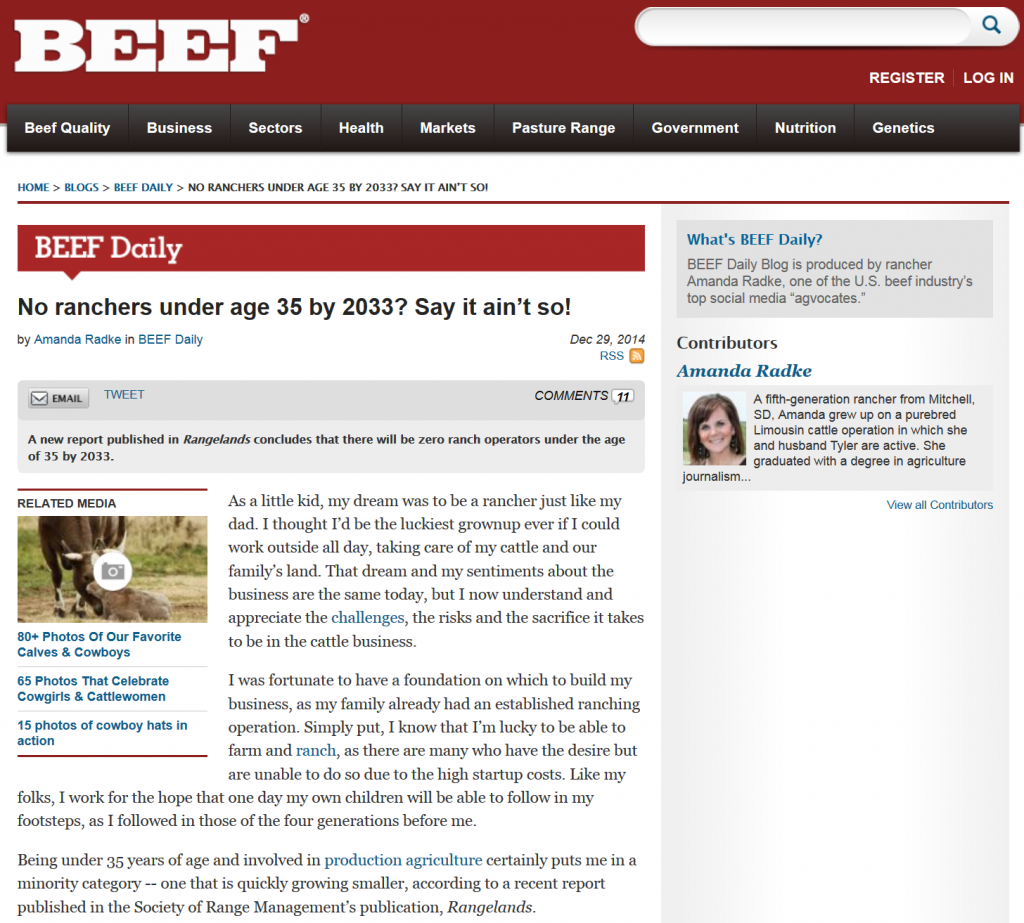
A screen shot of Stewart Truelsen’s article in Capital Press. Click the image to read the full article.
An UHPSI article on the changing demographic trends among farm and ranch operators was released in the December issue of Rangelands journal. Since then, several reporters have used the piece as a base from which to discuss the implications of an aging agricultural workforce. Stewart Truelsen of Capital Press is one such author. His piece, which can be found here, largely speaks to the fact that an aging agricultural community is not new, and may not warrant the concern some of the predicted figures imply. Truelsen thinks that the broader field has recruiting to do, but also believes older farmers of today are more well equipped to continue working in old age than those of days gone by. These older workers will be key as we look to training young operators, but an important questions remains. Should farmers and ranchers of retirement age really be expected to, or feel obligated to continue working because the field needs them?
Another such author is Amanda Radke who wrote a piece for Beef Daily. Radke is a fifth generation cattle rancher in South Dakota who writes about the rewards and challenges of the cattle business, conveying optimism when thinking about how to keep younger farmers interested. “Young people,” she notes, “will find new, creative ways to diversify. Off-farm incomes will be critical to maintain cash flow. Online, at-home businesses will become more of a mainstay. We are already seeing this trend now, so I only see that expanding in the future.”
Various other outlets have featured similar articles or re-prints of the initial Ranglenads press release:
Ranch Marekting Associates
Western Livestock Journal
Manitoba Co-operator
It’s clear from this and other press that an aging agricultural community is a hot topic. It will be important to continue watching the trends and to see if and how new initiatives bring a more hopeful future. As our research team follows the conversation about our initial research findings, we have noticed reporters gravitating toward a specific projection that there will be no operators younger than 35 by 2033. Here we offer friendly encouragement to use this prediction in it’s proper context. The preceding sentence in the report specifically states that “if we consider each of the modeled trends independently, ignoring the effects of other age classes or geographic areas, a somewhat dire future is forecasted.” This is followed by several predictions which are, in turn, followed by “Although age classes and political units don’t operate in isolation, these projections are cause for concern.” Will there actually be no operators younger than 35 by 2033, certainly not, as such trends depend on spatial and temporal soci-economic relationships.

